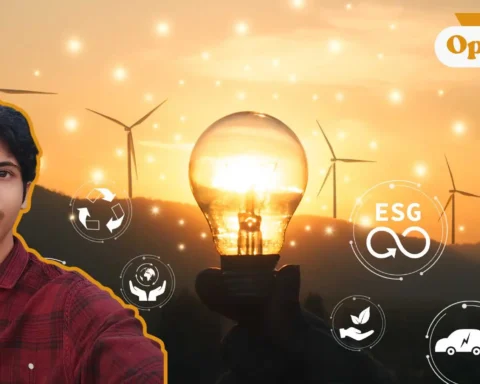Since independence, India has experienced massive economic change. India has drastically changed and emerged as one of the biggest international economic players. Through this article, we would like to walk you through major stepping stones in the path of the Indian economy with applicable instances and examples that happened in real-time.
Economic Transformation Over a Century
After being independent India had to face many problems like poverty, lack of education, and infrastructure. The first economic initiatives were based on the principle of being self-dependent and import substitution, resulting in a set up of public sector enterprises; such as the Bharat Heavy Electricals Limited (BHEL) which was established in 1964 for the production of heavy electrical equipment, with a view to reduce dependence on imports and investment in indigenous capacity. However, the inefficiencies and slow growth they caused led to a move toward liberalization in the 1990s.

Steady GDP Growth
Another key indicator of the economic development of India is its GDP which represents a market value or price measure of all goods and services. GDP growth rates in India have been on the rise over the years.
For example, India’s nominal GDP was Rs 295.36 lakh crores (about US$3.54 trillion) in FY 2023-24; making India the world’s fifth-largest economy by nominal GDP. This growth is reflected in cities such as Gurgaon and Noida where small towns have changed into major financial, economic, and technical powerhouses with the presence of office bases for global companies like Google or Microsoft.
Fast improvement of infrastructure in Gurgaon, particularly with the coming up of Delhi Metro and approach roads that connect it to other parts like subliminal towns such as Faridabad has also firmed this lifestyle transformation.
A Watershed in Economic Reform
Economic reforms that began in 1991 were a turning point for India. The liberalization policies deregulated industries by removing government impactions and sought to attract foreign investment.
An important case is when the Goods and Services Tax (GST) was launched in 2017, which combined all the complicated things required when taxing across different states. For example, in the past before GST, enterprises such as ITC Limited found themselves having to pay several taxes based on what state they were operating within. Therefore, they used to have many compliance measures that were cumbersome for them. However with this new system of taxation called GST; ITC has simplified its business processes resulting in increased effectiveness and better positioning than before.
Source: Business Standard
GST’s Real-World Effects
The Goods and Services Tax (GST) has helped Zomato, a widely recognized food delivery company, simplify its tax compliance which was earlier characterized by a complex mix of different taxes levied by various states. This was made possible through flux in state taxation policies placed on them. It also made it possible for Zomato to reach out to more clients beyond its previous boundaries in the shortest time possible and at minimal costs.
Flourishing Export Sector
India’s export sector has been an important contributor to its economic growth. In the 2023-24 fiscal year, the total value of merchandise exports reached US$459.65 billion, an increase of 9.12% from the previous year. For example, Tata Motors is one company that exports cars internationally, including electric vehicles (EVs), to European markets. This not only raises Tata Motors’ income but also ensures that India remains known on the automotive world stage.
Sample Scenario: Textile Exporting
The textile sector is another major contributor to India’s export earnings. Raymond Ltd., known for its superior fabrics, sends these articles out to more than fifty-five nations. By making use of its knowledge in quality cloth making, Raymond has positioned itself as a world brand signifying India’s potential in the export of quality textiles at higher-end prices internationally.
Growth in Different Sectors
The Role Played By the Information Technology (IT) and Software Services
This sector has been a pillar of growth for the Indian economy. Major IT hubs such as Bangalore have come into existence with a lot of funds and skillful manpower. Consider Infosys which began with only seven engineers back in 1981 but is now known worldwide as one of its kind employing more than 300000 individuals across different nations.
Real-Life Impact of IT Growth
This growth has resulted in tangible consequences, one of which can be seen in Wipro, another IT major which has played a major part in Indian exports. Based in Bangalore, Wipro’s revenue rose from $1.5 billion in 2001 to more than $9 billion as of 2023 indicating how much this sector is necessary for economic development.
Source: Statista
Manufacturing Sector
The manufacturing sector has experienced strong growth with an increase of 9.9% in the last quarter of fiscal year 2023-24. For instance, Samsung is known for owning a large-scale production plant located in Noida, Uttar Pradesh. This plant sells millions of mobile phones every year locally and globally.
The Touch of Samsung’s Investment on the Ground
One of the reasons that Samsung’s Noida factory is so important is because of how many jobs it creates; over 70,000 people work there directly with many others in related sectors. Because of this investment, India has become the largest smartphone manufacturer globally.
Medicines and Health Care
Pharmaceuticals are India’s number three industry by volume and fourteenth by value according to estimates given out by several sources today. A distinguished example is Dr.Reddy’s Laboratories which has a worldwide reach providing low-cost drugs to nations across Africa as well as Asia.

Real-world Implications Amid Covid-19
Millions of vaccine doses were manufactured by the Serum Institute of India during the COVID-19 pandemic, which were offered to both local markets and exported abroad, demonstrating how well the industry could react to world health emergencies.
Renewable Energy
In India, there have been massive advancements in renewable energy with a focus on raising its non-fossil fuel capacity. One site reflective of this situation is the Rewa Ultra Mega Solar Park located in Madhya Pradesh which provides 750 MW of power.
Rewa Project’s Influence on Real-life
60% of Delhi Metro is run on Rewa Solar Park, which provides sustainable energy for public transport within the capital city. This project shows that India pledges to sustainable development and the need to reduce carbon footprints while also generating employment opportunities in the field of renewable energy.
Financial Services
Economic growth has been greatly realized through financial services, which enable many other activities such as investments and consumption. With digital payment systems like Unified Payments Interface (UPI), transactions have seen a paradigm shift.
Real-Life Consequence of UPI
For example, UPI was used by small businesses such as rural ones during the pandemic thereby increasing their client base. Even a local chai vendor started using UPI payments which enabled catering to tech-savvy customers and increased sales by more than 30% that was the impact of UPI in India.
Challenges and Opportunities
Even though considerable advances have been made, India needs to overcome certain hurdles in order to sustain an increase in its economy. Millions of jobs should be created to meet the rising number of employees available. Between 2023 and 2030, the government expects there will be 90 million new non-farm job opportunities across the nation which will necessitate huge amounts of finance to be directed into essential activities including among others; manufacturing, service-oriented, and farming sectors.
Innovation and Technology
The economic growth in India’s future will depend significantly on innovation and technology. The government is funding research projects aimed at fostering innovations in different sectors such as artificial intelligence (AI), biotechnology (BT) as well as clean energy (CE).
Collaboration in Real Life
An evident illustration is the partnership between NVIDIA and educational institutions from India to promote research on AI. The goal of this collaboration is to create advanced AI solutions with an intention to position India as a leading player within the international technology community.
Infrastructure Development
Infrastructure development continues to be one of the top priorities of the Indian government. There are major investments being made in transportation, urban planning, and digital infrastructure projects.
Real-Life Examples of Infrastructure Projects’ Impact
For instance, Bharatmala Pariyojana aims to improve road access throughout India through thousands of kilometers of newly constructed highways. With its commissioning in 2020, the Delhi-Meerut Expressway has helped reduce journey time considerably thereby enhancing logistics and commerce between these major urban centers.

Conclusion
India’s economic transformation since independence has been remarkable. Its journey is a true example of its resilience and potential, and the future holds even greater promise for our vibrant nation. Although there are many challenges ahead, INDIA is making a positive presence globally. What are the aspects and stats that blew your mind? Let us know in the comments below.
If you have any burning opinions to share, please write to us at larra@globalindiannetwork.com.









